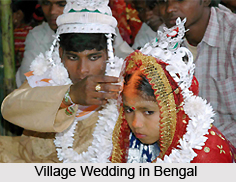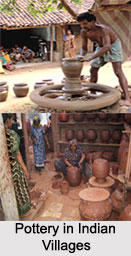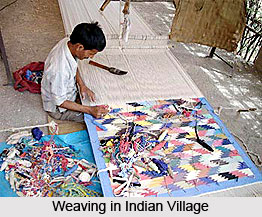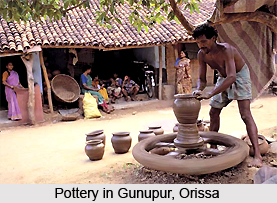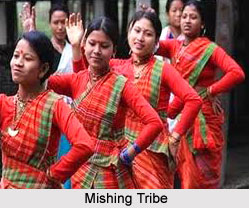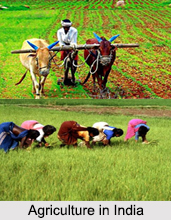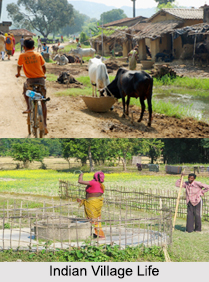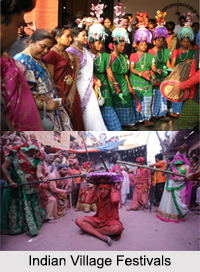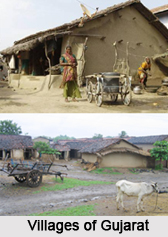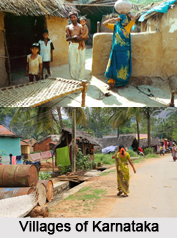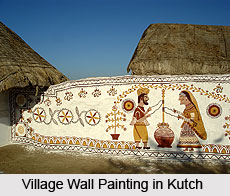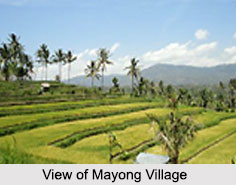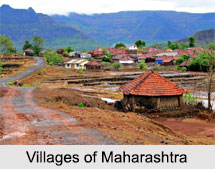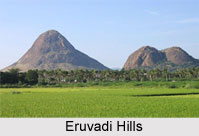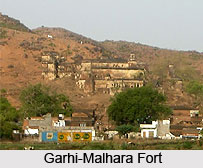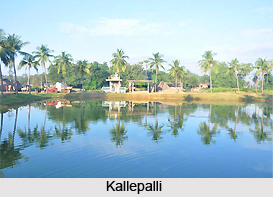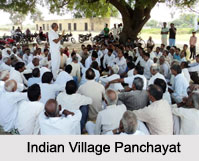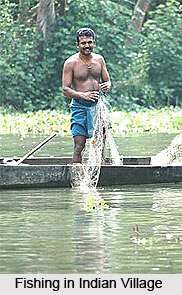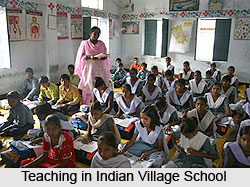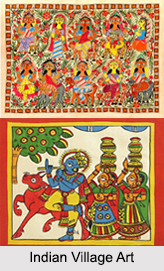 Indian Village Art displays the culture and tradition of their respective villages. Every region in India has its own style and pattern of art. The Indian folk paintings, their styles and patterns are as diverse as the Indian nation itself. Folk paintings use very vibrant and natural colours and papers, clothes, leaves, earthen pots, mud walls, etc. are used as canvas. Indian Village paintings are diverse in India and reflect rich cultural heritage and they are the true examples of artistic expression. They are so variable from region to region because of the availability of material in different area.
Indian Village Art displays the culture and tradition of their respective villages. Every region in India has its own style and pattern of art. The Indian folk paintings, their styles and patterns are as diverse as the Indian nation itself. Folk paintings use very vibrant and natural colours and papers, clothes, leaves, earthen pots, mud walls, etc. are used as canvas. Indian Village paintings are diverse in India and reflect rich cultural heritage and they are the true examples of artistic expression. They are so variable from region to region because of the availability of material in different area.
Types of Indian Village Art
The most famous types of Indian Village art paintings hence include various ancient Indian art forms such as Madhubani, Phad, Kalamkari, Patachitra, Warli paintings, Gond paintings, etc.
Madhubani Paintings: These paintings are an indigenous art form of a picturesque village of Bihar. The women have practiced this art form since many centuries and they maintain their dominance on this craft. The figures are painted on household and village walls to mark the seasonal festivals and special events. However, most of the Madhubani Paintings mostly feature nature related themes. Since this intricate skill is handed down the generations, traditional designs and patterns are widely maintained.
Phad Paintings: Phad paintings are in fact, the most famous form of painting in Rajasthan. Phad paintings are characterized by their own unique styles and patterns. They are especially appreciated as they use vibrant colours and quaint historical themes, the life and times of valorous heroes and so on. The most popular heroes of Phad paintings include Prithviraj Chauhan, Goga Chauhan, Amar Singh Rathore, Papuji and so on.
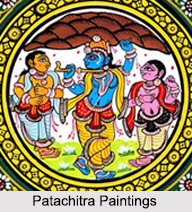 Warli Paintings: Originated by the Warli tribes from the Western Ghat of India, in 2500 BCE, this is easily one of the oldest art forms of India. It is mainly the use of circles, triangles and squares to form numerous shapes and depict daily life activities like fishing, hunting, festivals, dance and more. All the paintings are done on a red ochre or dark background, while the shapes are white in colour. Another popular theme of this form of folk art is the dance that men and women perform in circles and spirals around a musician.
Warli Paintings: Originated by the Warli tribes from the Western Ghat of India, in 2500 BCE, this is easily one of the oldest art forms of India. It is mainly the use of circles, triangles and squares to form numerous shapes and depict daily life activities like fishing, hunting, festivals, dance and more. All the paintings are done on a red ochre or dark background, while the shapes are white in colour. Another popular theme of this form of folk art is the dance that men and women perform in circles and spirals around a musician.
Patachitra Paintings: Patachitra is a vibrant folk art form native to Odisha. This famous ethnic painting was born out of the cult of Lord Jagannath - the presiding deity of Odisha. Incredible pictorial conceptions, characteristic conventions and vibrant colours make the Patachitra a unique treasure in the rich coffer of Indian traditional art. Executed primarily on cloth, using natural colours, these handcrafted paintings have charmed admirers from all over the world.
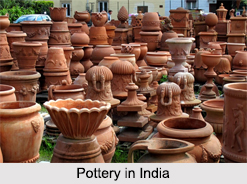 Miniature Paintings: These paintings are characterised by its miniature size but intricate details and acute expressions. Originating in the Mughal era, around 16th century, later, it was adopted by Rajputs, and is now popularly practiced in Rajasthan. As with other art forms, the miniature paintings depict religious symbols and epics. These paintings stand out as humans are portrayed with large eyes, a pointed nose and a slim waist, and men are always seen with a turban.
Miniature Paintings: These paintings are characterised by its miniature size but intricate details and acute expressions. Originating in the Mughal era, around 16th century, later, it was adopted by Rajputs, and is now popularly practiced in Rajasthan. As with other art forms, the miniature paintings depict religious symbols and epics. These paintings stand out as humans are portrayed with large eyes, a pointed nose and a slim waist, and men are always seen with a turban.
Pottery: The Indians are expert in moulding clay with their hands to form various things of daily utility, toys and deities of worship since the ancient period. Pottery in Indian villages can be classified in religious aspect as well. There are many types of village pottery like Unglazed Pottery, Glazed Pottery, Karigari Pottery, Blue Pottery, Black Pottery, Terracotta etc.
Embroidery: The Indian villagers are engaged in making various types of embroidery, which are famous all over the world. These include Kantha Embroidery, Chikan Embroidery, Kasuti Embroidery, Crochet Embroidery, Zardozi Embroidery, Beaded Embroidery, Needle Craft Embroidery, etc. The Chikan Embroidery is a major occupation for many villagers in the central Indian state of Uttar Pradesh. They make different types of Chikan work namely Taipchi, Bakhia, Phunda, Murri, Jaali, Hathkati, Pechni, Ghas Patti, Chaana Patti, etc.
Indian village arts are very fetching and a visual treat, as they employ vibrant and natural colours and papers, clothes, leaves, earthen pots, mud walls and so on, as their canvas to paint on.
